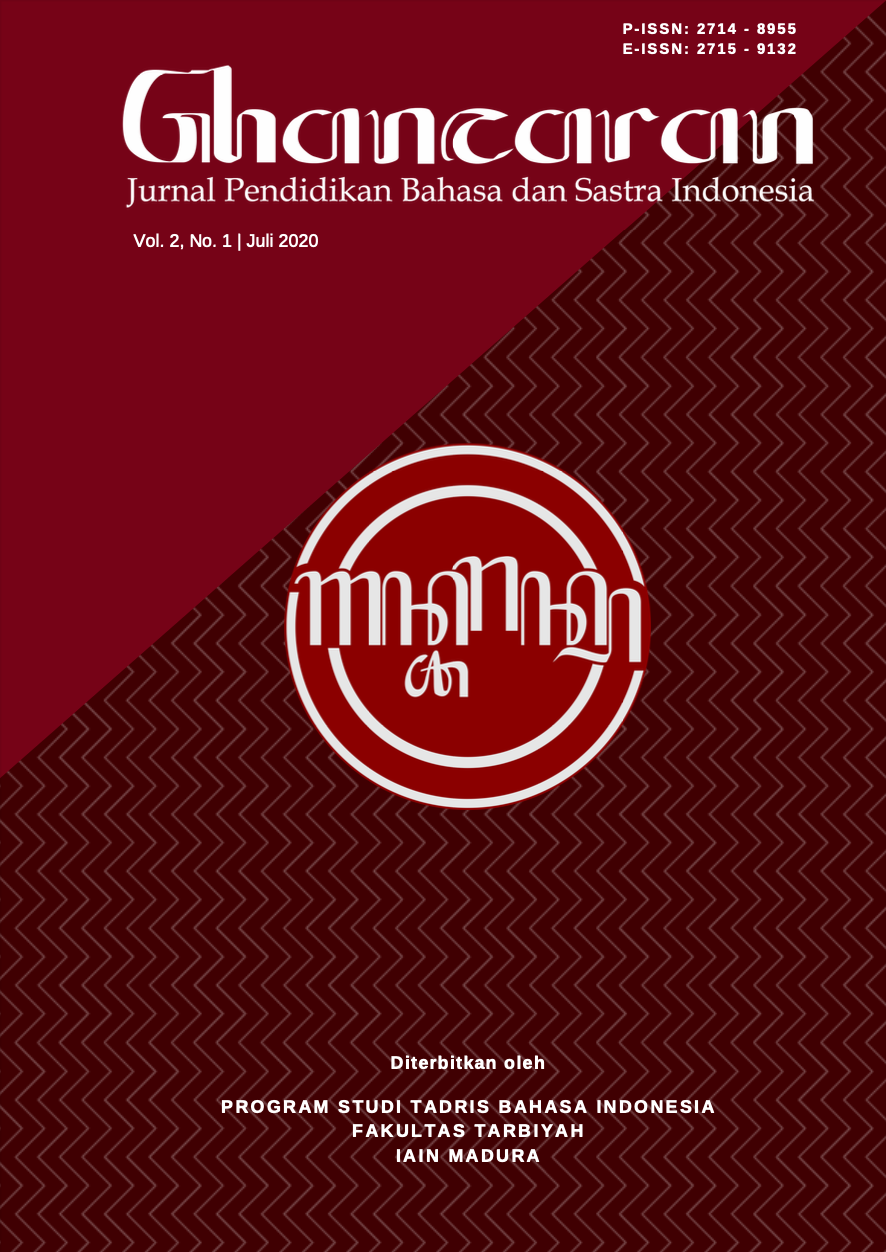TELAAH TINGKAT KESULITAN TEKS EKSPOSISI DALAM BUKU SISWA BAHASA INDONESIA: EKSPRESI DIRI DAN AKADEMIK UNTUK SMA/SMK KELAS X KURIKULUM 2013
 Abstract views: 663
,
Abstract views: 663
,
 PDF downloads: 824
PDF downloads: 824
Abstract
Downloads
References
Alwi, H. (2000). Tata Bahasa Baku Bahasa Indonesia. Jakarta: Balai Pustaka.
Chaer, A. (2008). Morfologi Bahasa Indonesia (Pendekatan Proses). Rineka Cipta.
Kebudayaan, K. P. dan. (2014). Bahasa Indonesia: Ekspresi Diri dan Akademik Edisi Revisi. Kementrian Pendidikan dan Kebudayaan.
Kegl, J. (1989). The Boundary Between Word Knowledge and World Knowledge. In Theoretical Issues in Natural Language Processing (pp. 28--33). Lauwrence Erlbaum.
Masnur, M. (2008). Tatabentuk Bahasa Indonesia, Kajian ke Arah Tatabahasa Deskriptif. Bumi Aksara.
Meier, P. (2007). Mind-Mapping a Tool for Elicting and Representing Knowledge Held by Diverse Informants. Social Researce Update, 52.
Pappas, C. C., Barbara, Z. K., & Linda, S. L. (1995). An Intergrated Language Perspective in Elementary School: Theory into Action (2nd ed). Longman.
Priyatni, E. T. (2014). Landasan Pembelajaran Bahasa Indonesia. Bumi Aksara.
Priyatni, E. T., & Harsiati, T. (2013). Bahasa dan Sastra Indonesia SMA/MA Kelas X. Bumi Aksara.
Samsuri. (1985). Tata Kalimat Bahasa Indonesia. PT. Sastra Hudaya.
Sinatra, R. C., Stahl-Gemake, J., & Morgan, N. W. (1986). Using Semantic Mapping After Reading to Organize and Write Original Discourse. Jurnal of Reading, 30, 4–13.
Taylor, I. (1990). Psycholinguistics: Learning and Using Language. Prentice-Hall International, Inc.
Tjiptadi, B. (1984). Tata Bahasa Indonesia Cetakan III. Yudistira.
Ghancaran: Jurnal Pendidikan Bahasa dan Sastra Indonesia uses an Open Access Policy under the Creative Commons Attribution-ShareAlike 4.0 International License. Authors publishing in this journal agree to the following terms:
- Ghancaran Journal holds the copyright and grants the journal rights for first publication with the work simultaneously licensed under a

The work is distributed under Creative Commons Attribution-ShareAlike 4.0 International License which allows others to share, copy, and redistribute the material in any media or format and adapt, remix, change, and develop the material even for commercial purposes, as long as it is stated credit and license derivative works under similar terms. - Authors may make additional contractual arrangements for non-exclusive distribution of the journal's published work version.
- Authors are permitted to post their work online (e.g., in institutional repositories or on their websites) before and during submission, as doing so may lead to productive exchange.



















